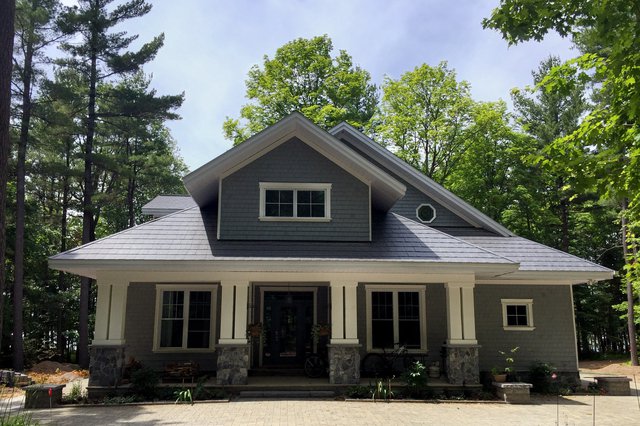
Wildfire season is coming, and experts say it’s likely to be intense this year, especially in areas such as the West coast that are experiencing drought. Already, fires are burning in California, a warning sign the season may again be a brutal one in many regions.
Early spring is an ideal time for homeowners to take steps to reduce potential wildfire threats to their homes and property before hotter weather strikes. Making wildfire-smart decisions about improvement projects and prioritizing chores that help reduce risks well in advance can offer extra protection when the wildfire season flares up.
Home improvement experts at leading trade groups such as the Metal Roofing Alliance (MRA) and emergency disaster organizations like FEMA offer homeowners a helpful checklist to guard against wildfire danger:
- Approach spring yard clean up with wildfire protection in mind
Trim and remove shrubs and trees close to structures. FEMA recommends creating a 30-foot safety zone around the house at minimum, more if the property is sloped (fire travels more readily uphill). Keep in mind that some vegetation is more flammable than others. Do research to plan fire-resistant landscaping by checking with your local fire department or garden center. - Look for danger prevention, up high and down low
Wildfires can spread underground and by flying sparks. Remove tree limbs within 15 feet of the ground. Rake and remove fallen debris and organic matter including pinecones, dead branches, grasses and leaves. - Prioritize resiliency when making home improvement decisions
Some building materials are much more ignition resistant than others. In wildfire-prone areas, work to reduce and eliminate the use of wood for exteriors as much as possible. Rooftops are especially vulnerable to wayward sparks and embers, even from wildfires more than a mile away. Choose materials like metal roofs that carry a Class A fire rating, the highest level of protection available. Do not use wood, shake and traditional shingles for roofs in wildfire prone areas. Make sure roof vents are covered with wire mesh to help prevent wayward sparks from finding their way inside. - Perform ongoing care and maintenance
Cut your lawn often and maintain irrigation schedules. Remove debris from gutters regularly. Do not keep woodpiles close to any structures and haul away dried yard debris piles promptly. - Eliminate exposed spaces
Porches, balcony and overhangs with exposed space underneath can be fuel for an approaching fire. Clear all leaves, trash and other combustible materials from underneath and do not use them for storage. Extend ½ inch mesh screens all the way to the ground and consider fire-resistant materials when planning porch or sun decks. - Be ready for emergency evacuation
Create a plan early so all family members know where to go and what to bring should you have to evacuate quickly. Plan several escape routes in case roads are blocked by a wildfire. Have kit ready to “grab and go,” filled with essentials including important prescriptions, valuable information, first aid supplies and other emergency items to save time in the event of a crisis.